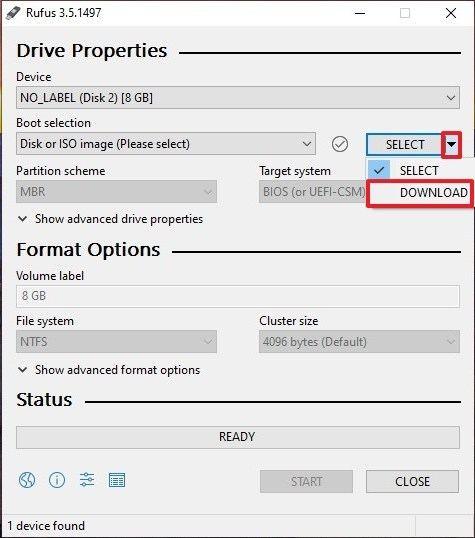Windows 7 Boot Usb Iso
- Download Windows 7 Bootable Iso
- Create Windows 7 Boot Usb From Iso
- Windows 7 Boot Repair Usb Iso
- Windows 7 Bootable Usb Iso Free Download
However, to install Windows 7 from a USB drive, you must first transfer the ISO or disk image to the storage device and make it boot. Also, you must make sure that your computer is configured to boot from an external USB device. Buy, download and copy Windows 7 ISO Step 1. Go to the Microsoft store ( microsoftstore. Extract ISO Images With a File Compression Program. Rufus, and related ISO-to-USB tools, are great when you need to get some sort of bootable program, or even an entire operating system, onto a USB drive. Before that, we will see whether merely copying the ISO to USB is enough to make it bootable. Part 2: Can I Just Copy Windows ISO to USB? Copying audio or a video creates an identical duplicate of the said media. To boot a USB, you need a copy of the ISO image in USB. So, copying the ISO to USB should work, RIGHT? Well, it doesn’t.
bootable USB for windows 7/8/10 with Rufus:– There are many ways to make bootable USB from an .ISO package, but you might have always wondered which is the best method out there. So here we will the discuss the best method to make a successful bootable USB
Related 2021 Article 7 Free Tool To Create Bootable Windows 7 & 10 On A USB Drive. Unlike previous generation that runs on DOS, today’s bootable rescue USB comes with Windows PE distributions, they are mini-Windows operating systems that one can run from a USB flash memory stick. Ventoy is an open source tool to create bootable USB drive for ISO files. With ventoy, you don't need to format the disk again and again, you just need to copy the iso file to the USB drive and boot it.
The software we’re gonna use is called Rufus, a lot of guys you may know about this, but for those who are unaware of this, Rufus is a small sized, free utility that helps in creating bootable disks.
The reason why I choose Rufus over others are
- Fast and efficient
- Works for almost all OS, like windows 7/8/10, ubuntu, kali linux and many others
- Has special feature : It is able to create UEFI/BIOS with GPT structure or MBR strucure
So now lets begin on how to create a USB bootable drive
- Download Rufus over here https://rufus.akeo.ie/downloads/rufus-2.7.exe
- Once its downloaded, double click to open it
3. You will be shown with this window
4. Then, insert your pen drive.
NOTE: Always use a pen drive with at least 4gb of space
5. Next step is to select the ISO file.
Click on the small CD-drive icon shown on the down right side
and select the iso you want to make the bootable disk
6. Once you selected the ISO, now its time to choose what kind of partition scheme and target system type you want to make. In rufus we have the possibility to make three kinds. They are
- MBR partition with BIOS or UEFI
- MBR partition for UEFI
- GPT partition for UEFI
In order to choose the file system you need to first know what kind of disk structure is the target system as well as the boot type. There are two types of disk structures, first is the old MBR(Master Boot Record) and the latter is the more advanced GPT(GUID partition table). To know the type of disk of the target system perform these steps
- Go to Disk management > Right click on disk 0 > Click on properties > under volume table the partition style is shown
Download Windows 7 Bootable Iso
In order to know the boot type follow the step
Create Windows 7 Boot Usb From Iso

Go to Run (Win + R) > type msinfo32 and press enter, then under system summary the bios mode is shown
Now you can choose the partition scheme and when you are ready hit the start button!

Windows 7 Boot Repair Usb Iso
A Engineering grad, who is in love with windows, and loves to write about it!

Windows 7 Bootable Usb Iso Free Download
Related Posts:
- 100% open source (license)
- Very simple to use (Get started)
- Fast (limited only by the speed of copying iso file)
- Can be installed in USB/Local Disk/SSD/NVMe/SD Card
- Directly boot from ISO/WIM/IMG/VHD(x)/EFI files, no extraction needed
- No need to be continuous in disk for ISO/WIM/IMG/VHD(x)/EFI files
- Both MBR and GPT partition style are supported
- x86 Legacy BIOS, IA32 UEFI, x86_64 UEFI, ARM64 UEFI, MIPS64EL UEFI supported
- IA32/x86_64 UEFI Secure Boot supported Notes
- Persistence supported Notes
- Windows auto installation supported Notes
- RHEL7/8/CentOS7/8/SUSE/Ubuntu Server ... auto installation supported Notes
- FAT32/exFAT/NTFS/UDF/XFS/Ext2(3)(4) supported for main partition
- ISO files larger than 4GB supported
- Native boot menu style for Legacy & UEFI
- Most type of OS supported, 700+ iso files tested
- Linux vDisk(vhd/vdi/raw...) boot solution Notes
- Not only boot but also complete installation process
- Menu dynamically switchable between ListView and TreeView mode Notes
- 'Ventoy Compatible' concept
- Plugin Framework
- Injection files to runtime enviroment
- Boot configuration file dynamically replacement
- Highly customizable theme and menu style
- USB drive write-protected support
- USB normal use unaffected
- Data nondestructive during version upgrade
- No need to update Ventoy when a new distro is released